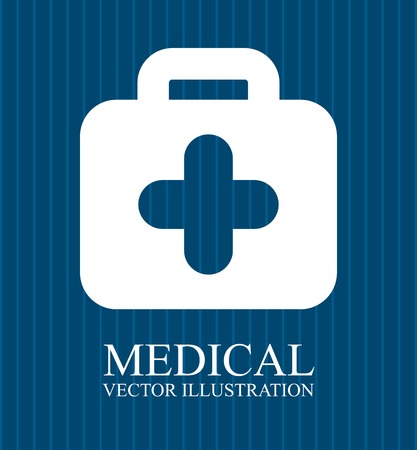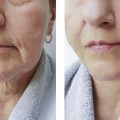Introduction: The Allure and Reality of Cosmetic Enhancements
In recent years, the UK has witnessed a remarkable surge in the popularity of cosmetic procedures, from subtle tweaks like dermal fillers to more transformative interventions such as surgical facelifts. This trend is fuelled by aspirational beauty standards, widely promoted through social media influencers, celebrity culture, and glossy advertising campaigns. For many, the promise of enhanced confidence and an improved sense of self can feel irresistible. Yet, while conversations often focus on the immediate side effects—like swelling, bruising, or minor discomfort—the long-term risks and complications are seldom given equal airtime. As someone who has both observed and experienced this burgeoning scene firsthand, I find it crucial to look beyond the initial allure. Understanding what lies beneath the surface can empower individuals to make truly informed choices about their own bodies, balancing desire with an honest assessment of potential consequences that may only emerge months or even years later.
2. Understanding Long-term Risks: What Goes Unseen
When it comes to cosmetic medicine, the immediate aftermath of a treatment often garners the most attention—redness, swelling, or mild discomfort are expected and generally resolve within days or weeks. However, what truly warrants closer consideration are the long-term risks that may remain concealed for months or even years after the initial procedure. These unseen complications can have a profound impact on both appearance and wellbeing, subtly altering outcomes long after the excitement of transformation has faded.
Persistent Complications in Cosmetic Treatments
While many patients focus on short-term side effects, its vital to appreciate that some adverse effects emerge only with time. Below is a summary table outlining several common long-term risks associated with popular cosmetic procedures:
| Complication | Description | Typical Onset Time |
|---|---|---|
| Scarring | Visible marks or thickened tissue resulting from improper healing or excessive collagen production. | Several months post-procedure |
| Pigmentation Changes | Areas of skin becoming lighter (hypopigmentation) or darker (hyperpigmentation) than surrounding tissue. | Weeks to years later |
| Implant Migration | Movement of fillers or implants from their original placement, potentially distorting facial features. | Months to years post-treatment |
| Nerve Damage | Sensation changes such as numbness or tingling if nerves are inadvertently affected during treatment. | Immediate to delayed onset, sometimes permanent |
| Tissue Atrophy | Loss of volume or thinning of skin and underlying tissues, often following repeated injections. | Gradual development over months or years |
The Hidden Timeline of Cosmetic Outcomes
The subtlety of these risks lies not just in their physical manifestation but in their timing. For example, pigmentation changes may not be apparent until after sun exposure months later, while implant migration can slowly alter facial symmetry without immediate notice. This delayed presentation underscores the importance of ongoing vigilance and regular follow-up appointments with your practitioner.
A Personal Reflection on Lingering Effects
Having witnessed friends and clients navigate unexpected complications, I am acutely aware that the true story of any cosmetic journey extends well beyond the clinic doors. The anticipation of instant beauty must be balanced with a thoughtful understanding that real risks may only reveal themselves over time—a reality that every patient deserves to know before making decisions about their body.

3. The Psychological Landscape: Beyond the Mirror
When we consider cosmetic medicine, it’s all too easy to focus on the physical outcomes—yet, for many in Britain, the long-term psychological effects can be equally profound. Cosmetic interventions are often pursued with the hope of increased confidence and self-esteem. However, beneath the surface lies a complex web of emotional responses that may unfold months or even years after the procedure.
The Quiet Persistence of Body Dysmorphia
For some, cosmetic enhancements do not resolve underlying issues with body image. In fact, procedures can sometimes amplify pre-existing concerns, leading to a cycle of dissatisfaction—a phenomenon known as body dysmorphia. Within British culture, where modesty and self-deprecation are woven into our social fabric, individuals might internalise their struggles, rarely voicing regret or anxiety openly. This silence can deepen isolation and hinder access to support.
Navigating Regret and Emotional Aftershocks
Regret is another shadow that may linger long after surgical scars have faded or injectable results have softened. Whether due to unmet expectations or an evolving sense of self, many find themselves wishing they had chosen differently. In a society that values resilience and “keeping calm and carrying on,” expressing such feelings can feel at odds with national identity—making it harder for people to seek help or admit vulnerability.
Social Pressures Unique to British Life
The UK’s media landscape, coupled with a pervasive celebrity culture and the pressures of social media, often sets unattainable standards of beauty. These influences contribute to a collective sense of “keeping up appearances,” particularly in urban centres like London or Manchester. Peer comparisons and subtle workplace judgements can exacerbate feelings of inadequacy following cosmetic treatment. The result? A uniquely British blend of stoicism mixed with quiet longing for acceptance—a tension that deserves greater attention when discussing long-term risks in cosmetic medicine.
In essence, while the physical side effects of cosmetic procedures are well-documented, it is these less visible psychological ripples—shaped by our own cultural norms—that can be most enduring. Recognising and addressing them is crucial for anyone considering cosmetic intervention in the UK.
4. Medical Complications: When Professional Advice Falls Short
While most cosmetic procedures in the UK are performed with great care and professionalism, it’s important to acknowledge that rare yet significant medical complications can arise—sometimes well beyond what is discussed during initial consultations. My personal journey through the world of aesthetic medicine has shown me that even when you meticulously follow every bit of professional advice, unpredictable medical outcomes can occur. These experiences have made me acutely aware of the necessity for vigilance and robust aftercare.
Rare but Serious Medical Outcomes
For many, the most concerning long-term risks involve complications such as chronic inflammation, tissue necrosis (the death of skin or underlying tissue), or even autoimmune responses where your body begins to attack itself. These are not just theoretical risks—they are documented in reputable NHS case studies and scientific journals across the UK. Chronic inflammation, for example, may develop subtly over months, leading to persistent discomfort and visible changes in appearance. Tissue necrosis, while rare, can result from compromised blood flow following fillers or other injectables, sometimes requiring surgical intervention. Autoimmune responses might manifest as prolonged swelling, rashes, or systemic symptoms that demand specialist management.
Comparison of Key Long-Term Medical Complications
| Complication | Description | Potential Outcomes | UK-Specific Management |
|---|---|---|---|
| Chronic Inflammation | Ongoing redness, swelling, tenderness at treatment site | Persistent pain, scarring, need for medication | Referral to dermatology through NHS or private practice; possible corticosteroids |
| Tissue Necrosis | Loss of skin/tissue due to blocked blood supply post-procedure | Ulceration, infection, need for surgical repair | Immediate A&E referral; wound care specialists involved; reporting via Yellow Card Scheme |
| Autoimmune Responses | Bodily immune system reacts abnormally to treatment substance | Rashes, joint pain, systemic illness | Immunologist consultation; possible long-term immunosuppressive therapy under NHS guidance |
The Vital Role of Aftercare and Follow-Up in the UK Context
The British healthcare system places a strong emphasis on aftercare and structured follow-up appointments. In my own experience and those shared by friends and clients alike, diligent monitoring after a procedure can make all the difference between a manageable side effect and a serious complication. If you notice anything unusual—whether it’s unexpected swelling days later or changes in skin colour—it’s crucial to contact your practitioner immediately. Many reputable clinics in the UK provide direct access lines for post-procedure queries and encourage prompt reporting of any adverse reactions through official channels such as the MHRA Yellow Card Scheme.
Aesthetic Wisdom: Beauty Is Not Without Vigilance
Navigating cosmetic medicine in Britain means balancing aspiration with caution. The rare but impactful complications remind us that beauty is an evolving journey—one that thrives on informed choices, transparent communication with practitioners, and a partnership with our uniquely British healthcare culture that values patient safety above all else.
5. Regulation and Safety: Navigating the UK Cosmetic Industry
When it comes to cosmetic medicine, understanding the regulatory landscape in the UK is absolutely vital for anyone considering a procedure. While many might focus on immediate results or short-term side effects, the long-term risks and complications are deeply tied to how well the industry is monitored and governed. The UK has made significant strides in recent years to tighten controls within the cosmetic sector, but as I’ve personally observed, there are still noticeable gaps that can leave consumers vulnerable.
The current regulatory framework primarily distinguishes between surgical and non-surgical procedures. Surgical cosmetic interventions, such as facelifts or breast augmentation, are regulated more stringently, requiring practitioners to be registered with organisations like the General Medical Council (GMC) or the Care Quality Commission (CQC). However, non-surgical treatments—including injectables like Botox and dermal fillers—are often performed in high street clinics or beauty salons with considerably less oversight. This patchwork approach can result in a confusing environment for those seeking safe and reliable treatments.
One of the key issues lies in consumer protection. While reputable clinics uphold strict standards for hygiene, informed consent, and aftercare, there remains a subset of providers who may cut corners or fail to fully disclose potential long-term consequences. It’s not uncommon for people to be drawn in by attractive offers or flashy marketing—only to discover later that their chosen practitioner was not adequately trained or insured. From my experience navigating this world, I cannot stress enough how important it is for clients to thoroughly research their provider’s credentials and clinic reputation before committing to any treatment.
Thankfully, there are growing calls within both professional circles and consumer advocacy groups for more robust regulation across all aspects of cosmetic medicine. Initiatives like voluntary registers and accreditation schemes—such as Save Face—play an increasingly important role in helping people make informed choices. These programmes vet clinics and practitioners against stringent safety criteria, offering peace of mind and reducing the likelihood of long-term complications. Yet, without statutory regulation of all practitioners administering injectables or laser treatments, some risks persist beneath the surface.
Ultimately, the responsibility for mitigating future risks does not rest solely on regulators; reputable clinics and experienced practitioners are at the heart of safer cosmetic journeys. By investing in continuous training, transparent communication, and comprehensive aftercare protocols, these professionals help set higher industry benchmarks. For patients like myself who value both aesthetic outcomes and wellbeing over time, choosing a trustworthy clinic isn’t just about looking good—it’s about safeguarding our health for years to come.
6. Making Informed Choices: Advice for the British Public
When contemplating cosmetic medicine here in Britain, I’ve learnt that the journey goes far beyond simply booking an appointment or choosing the latest treatment trending on social media. Our local context—a unique blend of NHS values, private healthcare nuances, and a pronounced sense of personal dignity—calls for a particularly mindful approach to aesthetic interventions.
Personal Insights from Real Experience
Having personally explored both subtle and transformative procedures, my advice is to prioritise thorough research. In the UK, we are fortunate to have regulatory bodies such as the General Medical Council (GMC) and Care Quality Commission (CQC), but it’s still essential to verify your practitioner’s credentials and track record. Ask for before-and-after photos, and don’t shy away from requesting patient testimonials or reviews specific to British clientele—this transparency is your right.
The Value of Consultation
A proper consultation shouldn’t feel rushed or transactional. I’ve found British clinics increasingly embrace a holistic ethos, offering comprehensive assessments that consider not just physical suitability but also psychological readiness. Use this time to discuss long-term risks—such as scarring, pigment changes, or even emotional impacts—and ensure all your questions are answered in plain English, free of jargon.
Setting Realistic Expectations
It’s tempting to hope for instant results or perfection, especially when influenced by curated images online. However, British aesthetics tend to favour understated enhancement over dramatic change. Be honest with yourself about what you hope to achieve, and listen carefully if your practitioner advises restraint or alternative options. Remember, true confidence comes from feeling like the best version of yourself—not someone else entirely.
Practical Guidance for Locals
If you’re considering a treatment in London, Manchester, Edinburgh or anywhere across the UK, always check if your chosen clinic is registered with relevant authorities. Discuss aftercare thoroughly—our unpredictable weather and busy lifestyles can impact healing and results more than you’d expect! And never feel pressured into same-day decisions; taking time to reflect is both wise and culturally respected here.
Ultimately, making informed choices about cosmetic medicine in Britain means blending research-driven caution with an appreciation for authentic beauty. With open dialogue, clear expectations, and support from reputable professionals, you can navigate potential risks while embracing the aesthetic journey with confidence and peace of mind.


